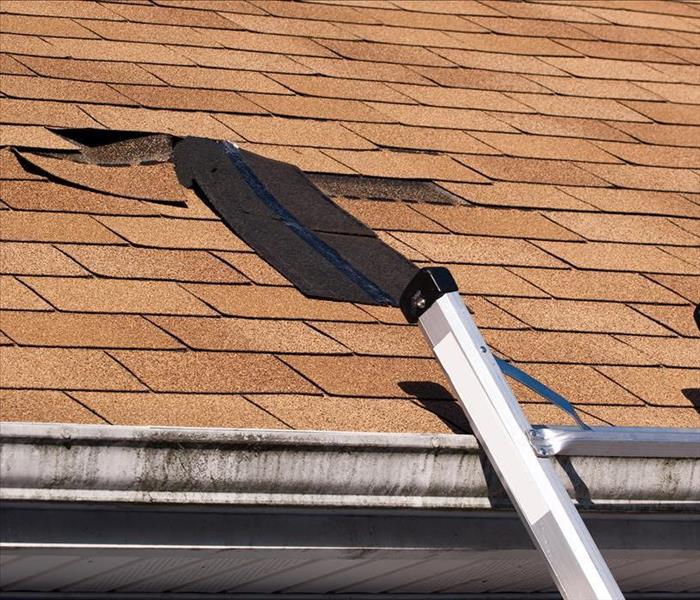Steps of the Storm Damage Mitigation Process
7/29/2021 (Permalink)
High winds and hail can cause broken or missing shingles on your roof. To protect your home, you must remedy this problem as soon as you can. Before you look for roof repair in Greenville, NC, however, you need to have the water damage inside your attic or top floor fixed.
4 Steps for Storm Damage Mitigation
1. Board Up Damaged Roof
Roof damage leaves your home vulnerable to a variety of problems:
- Leaks
- Debris
- Vermin
To prevent these issues, you must block the entry into your home that the storm left behind. Use tarps or boards to cover holes in the roof so that no further rain or wind damage is done to the interior of your home during the mitigation process.
2. Remove Saturated Materials
Before roof repair can commence, all materials damaged by the leak must be torn out. This may include ceilings, walls, insulation and flooring. Water damage restoration specialists assess the area and determine which materials cannot be salvaged. Then, they remove it.
3. Clean and Dry Affected Area
Water from a storm is likely contaminated with various bacteria, so any part of your home it touches must be disinfected. After the whole area has been clean and tested, the technicians make sure that it is also dry so that no secondary damage occurs later.
4. Restore Structure
Once everything is clean and dry, the restoration team can start the rebuilding process. They replace insulation, put up drywall and install new flooring. Then they match the new materials with the existing structure so that it is not obvious where the damage occurred.
If your roof is damaged in a storm, your first instinct is probably to call a trusted roofer. Before you arrange for roof repair, however, make sure that the process won't hide interior damage that needs to be addressed first. Fixing the whole problem is the key to getting your home and your life back to normal.




 24/7 Emergency Service
24/7 Emergency Service
